Left-sided superior vena cava complicates central line insertion

A CT thorax revealed the patient had two SVCs, and the patient’s left-sided SVC had been unintentionally catheterised” Gallaher and Somasundaram (2019) Extract: “A 39-year-old man with necrotising pancreatitis was admitted to the intensive care unit (ICU). On day 14, his right-sided central venous catheter (CVC) was replaced with a left-sided catheter. A confirmatory chest […]
Venipuncture versus peripheral IV catheter blood sampling
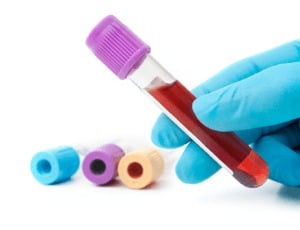
To compare the results of hematology, blood chemistry, and coagulation tests between two blood sampling methods via venipuncture and peripheral venous catheter” Jeong et al (2019). Abstract: AIMS AND OBJECTIVES: To compare the results of hematology, blood chemistry, and coagulation tests between two blood sampling methods via venipuncture and peripheral venous catheter. BACKGROUND: Laboratory results […]
Risk factors associated with neonatal candidemia in a neonatal unit

Prolonged intrahospital stay longer than seven days and thoracic and/or abdominal surgery were the most significant risk factors in this study for the development of neonatal candidemia” Caparó Ingram et al (2019). Abstract: OBJECTIVE: To identify the main risk factors associated with neonatal candidemia. PATIENTS AND METHOD: A retrospective paired case-control study was conducted from […]
Quercetin protects from catheter-related Staphylococcus aureus infections

These data suggest that antiinfective therapy targeting Coa with quercetin may represent a novel strategy and provide a new leading compound with which to combat bacterial infections” Wang et al (2019). Abstract: Coagulase (Coa) activity is essential for the virulence of Staphylococcus aureus (S aureus), one of the most important pathogenic bacteria leading to catheter-related […]
Persistent left superior vena cava draining into the left superior pulmonary vein

A persistent left superior vena cava (PLSVC) is the most common congenital variation of the thoracic venous system, affecting around 0.5% in the general population and around 3.0% in patients with congenital heart disease” Blokland et al (2019). Abstract: A persistent left superior vena cava (PLSVC) is the most common congenital variation of the thoracic […]
Quality assessment of vascular access procedures for hemodialysis

Quality assessment in vascular access procedures for hemodialysis is not clearly defined. The aim of this article is to compare various guidelines regarding recommendation on quality control in angioaccess surgery” Fila et al (2019). Abstract: Quality assessment in vascular access procedures for hemodialysis is not clearly defined. The aim of this article is to compare […]
Cefazolin/gentamicin versus taurolidine/citrate for prevention of CLABSI

This study aimed to compare the efficacy of LS using a combination of cefazolin and gentamicin versus taurolidine and citrate in reducing CR-BSI in patients undergoing HD and to identify any adverse effects” Bueloni et al (2019). Abstract: BACKGROUND: Catheter-related bloodstream infections (CR-BSI) is one of the various complications related to haemodialysis (HD). As a […]
Choice of assessment time after fluid challenge in patients with septic shock

To explore the short-term hemodynamic change of fluid challenge (FC) with crystalloid or colloid and define fluid responsiveness at the optimal time in patients with septic shock” Huang et al (2019). Abstract: OBJECTIVE: To explore the short-term hemodynamic change of fluid challenge (FC) with crystalloid or colloid and define fluid responsiveness at the optimal time […]
Equations for the inserted length of neonatal central venous catheters

The use of percutaneous central venous catheters (PCVCs) for central venous access is a routine and essential part of neonatal intensive care, particularly in the care of extremely preterm infants” Chiang (2019). Abstract: The use of percutaneous central venous catheters (PCVCs) for central venous access is a routine and essential part of neonatal intensive care, […]
Investigation of the cardiotoxic effects of parenteral nutrition

Parenteral nutrition (PN) is used for the intravenous delivery of nutrients to patients who cannot take food orally. However, it is not clear whether PN also negatively impacts cardiac tissue. The present empirical study investigated the cardiac effects of PN in rabbits” Gürünlüoğlu et al (2019). Abstract: INTRODUCTION: Parenteral nutrition (PN) is used for the […]
Current status of dialysis vascular access in Japan
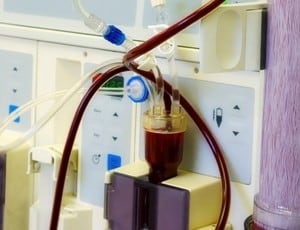
At the second Dialysis Access Symposium held in Nagoya, Japan, a proposal was made to investigate the differences in vascular access methods used in different countries” Fukasawa (2019). Abstract: At the second Dialysis Access Symposium held in Nagoya, Japan, a proposal was made to investigate the differences in vascular access methods used in different countries. […]
Review of coated and uncoated central venous catheters

The objective of this review is to assess the comparative clinical effectiveness, as well as harms and safety, between coated CVCs and uncoated CVCs for critically ill adult patients” Yeung and Loshak (2019). Excerpt: The Canadian Agency for Drugs and Technologies in Health (CADTH) previously published a summary of abstracts report on the clinical effectiveness […]
Randomized controlled trial examines ultrasound-guided central venous catheterization

The combined short-axis-and-long-axis approach for ultrasound-guided central venous catheterization had a lower posterior wall puncture rate than the SA-OOP approach, but there was no significant difference with the long-axis in-plane approach” Takeshita et al (2019). Abstract: OBJECTIVE: The authors compared the occurrence of posterior wall puncture using the short-axis out-of-plane and long-axis in-plane approaches with […]
Monitoring of long-term parenteral nutrition in children

This narrative review summarizes the current knowledge and practices related to monitoring of children with IF. The authors also share their 20-year experience at the Royal Children’s Hospital in Melbourne Australia on this topic” Zemrani et al (2019). Abstract: Pediatric intestinal failure (IF) is a rare and complex condition associated with significant morbidity and mortality. […]
Jugular vein catheterization with the assistance of Y-shape imaging technique

We aimed to present a case in which the location of the guidewire was verified by Y-shape visualization with an endocavity micro-convex probe after a cannulation attempt. Successful internal jugular vein catheterization was achieved with the assistance of the Y-shape imaging technique and the patient was avoided from multiple cannulation attempts” Aydın et al (2019). […]
Nontunneled central venous catheter bloodstream infections in pediatric surgery

Despite the limits encountered, this report is the first to describe the incidence and risk factors of temporary central-line infections (nontunneled CVC and PICC) in pediatric patients that have undergone invasive surgery” Denina et al (2019). Extract The study has several limitations. It was performed in a single center, and only clinical CLABSIs were observed. […]
Skin complications associated with pediatric central venous access devices
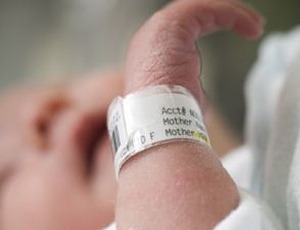
This study aimed to identify the incidence and prevalence of CVAD-associated skin complications current management, and characteristics associated with complication development, in pediatrics” Ullman et al (2019). Abstract: Central venous access devices (CVADs) are vital to enable treatment for children with cancer and other complex health conditions. However, complications effecting the CVAD wound are commonly […]
Landmark technique versus ultrasonography guidance for jugular vein catheterization

The purpose of this study was to evaluate the effectiveness of needle-guiding ultrasound for internal jugular venous cannulation” Kayir et al (2019). Abstract: Background: Central venous catheterization is an invasive procedure that must be performed during cardiovascular surgery. The addition of ultrasound guidance to the catheterization technique has shown effectiveness in reducing complications because it […]
Recommendations for preservation of central venous access in children

Children with chronic illness often require prolonged or repeated venous access. They remain at high risk for venous catheter-related complications (high-risk patients), which largely derive from elective decisions during catheter insertion and continuing care. These complications result in progressive loss of the venous capital (patent and compliant venous pathways) necessary for delivery of life-preserving therapies” […]
Idiopathic jugular and subclavian vein thrombosis

While lower extremity deep venous thrombosis is common, upper torso thrombosis is a rare clinical condition and usually a complication of central venous catheterization or malignancy-related paraneoplastic syndromes” Agrawal et al (2019). Abstract: Venous thrombosis is a vascular disorder which is a consequence of Virchow’s triad: hypercoagulability, venous stasis, and endothelial injury. While lower extremity […]
Current state of dialysis vascular access management in Korea
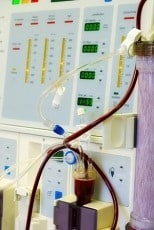
Recently, the number of central venous hemodialysis catheter insertion has decreased, and tunneled hemodialysis catheter has been inserted more than non-tunneled hemodialysis catheter, indicating that vascular access has been created timely and the vascular access team has been educated about and following international guidelines” Kim et al (2019). Abstract: The prevalence rate and the incidence […]
Effectiveness of ECG PICC tip location in patients with AF

The observational study evaluated the effectiveness in terms of reliability of the intracavitary tip location system (ITLS) method, better known as the ECG method, for the correct positioning of the catheter tip in patients with atrial fibrillation (AFIB); the method exploits the recording of the electrical potential produced by the f waves, expression of the […]
Simulation-based central venous catheter insertion training

To reduce costs and increase the availability of training, a randomized controlled study evaluated central venous catheter (CVC) insertion training in the simulation laboratory with nonphysician competent facilitators (NPCFs) as instructors” Musits et al (2019). Abstract: INTRODUCTION: Healthcare simulation supports educational opportunities while maintaining patient safety. To reduce costs and increase the availability of training, […]
Removal of entrapped central venous catheter guide wire

Guide wire entrapment due to fraying during central venous catheter placement using the Seldinger technique is a rare complication” Bruthans et al (2019). Abstract: Extravasal guide wire entrapment due to fraying during central venous catheter placement using the Seldinger technique is a rare complication, which should be resolved as soon as possible. A 68-year-old male […]
Drawing blood from peripheral intravenous cannula compared with venepuncture

To synthesise the evidence evaluating if blood samples are similar if obtained from peripheral intravenous cannula compared with venepuncture” Coventry et al (2019). Abstract: AIMS: To synthesise the evidence evaluating if blood samples are similar if obtained from peripheral intravenous cannula compared with venepuncture. DESIGN: A systematic review and meta-analysis was undertaken. DATA SOURCES: Searches […]
Review of web-based learning for vascular access skills

The aim of this study was to explore the perception and effectiveness of web-based learning in facilitating the development of clinical skills in undergraduate nursing students” Barisone et al (2019). Abstract: Web-based learning, on its own or in combination with traditional teaching methods, has become a consolidated practice in many countries, and has been described […]
Central venous catheter digital education tool to deliver instructions to parents

The goal was to investigate whether the use of a DVD education intervention reduced adverse complications and improved parent education for homecare management of CVADs for pediatric patients with cancer” Raybin et al (2019). Abstract: BACKGROUND: Research on parent understanding of homecare management of external central venous access devices (CVADs) for children with cancer is […]
Superior vena cava syndrome associated with central venous catheter insertion

We present the first case of hyperacute SVC syndrome that developed within 6 hours of insertion of a CVC into a patient’s right internal jugular vein alongside a pre-existing right internal jugular tunnelled dialysis line. With removal of the line, the patient’s symptoms resolved completely within hours” Edginton and Fundytus (2019). Abstract: Superior vena cava […]
Needlestick injury prevention training among health care workers

The rate of human immunodeficiency virus (HIV), hepatitis B virus (HBV), and hepatitis C virus (HCV) infections among health care workers that is caused by sharps injuries is higher in the Caribbean and Latin America than in other regions of the world” Akpinar-Elci, et al (2018). Abstract: The rate of human immunodeficiency virus (HIV), hepatitis […]
Central venous line associated deep vein thrombosis in children
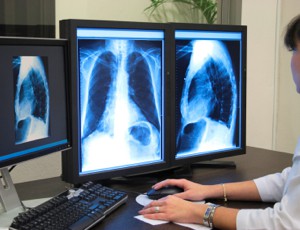
The presence of central venous line (CVL) is a major contributing risk factor with conflicting data on the relative risk of DVT with various types of central lines” Dhir et al (2019). Abstract: An increase in the incidence of deep vein thrombosis (DVT) has been reported in pediatric patients over the past decade. The presence […]

